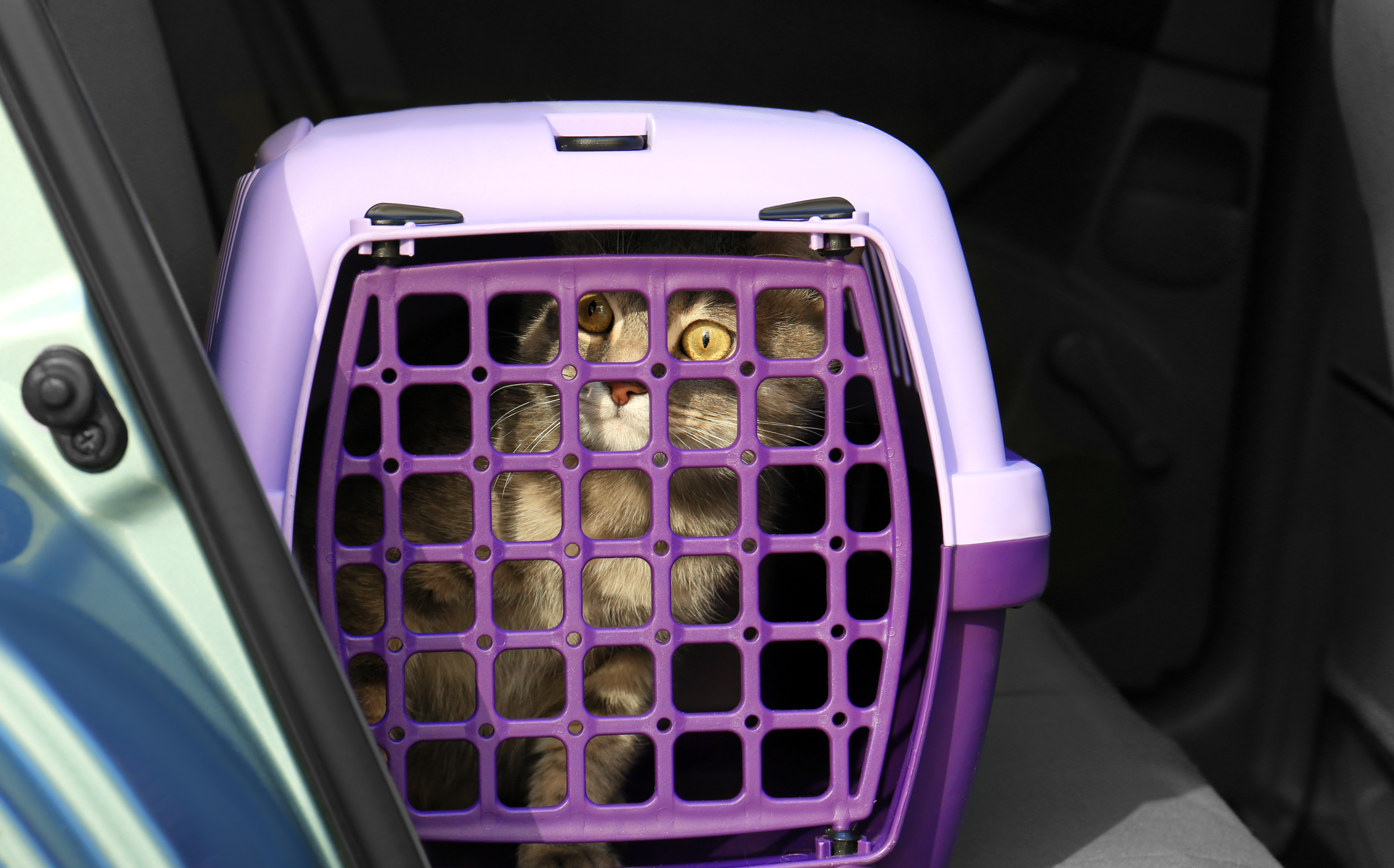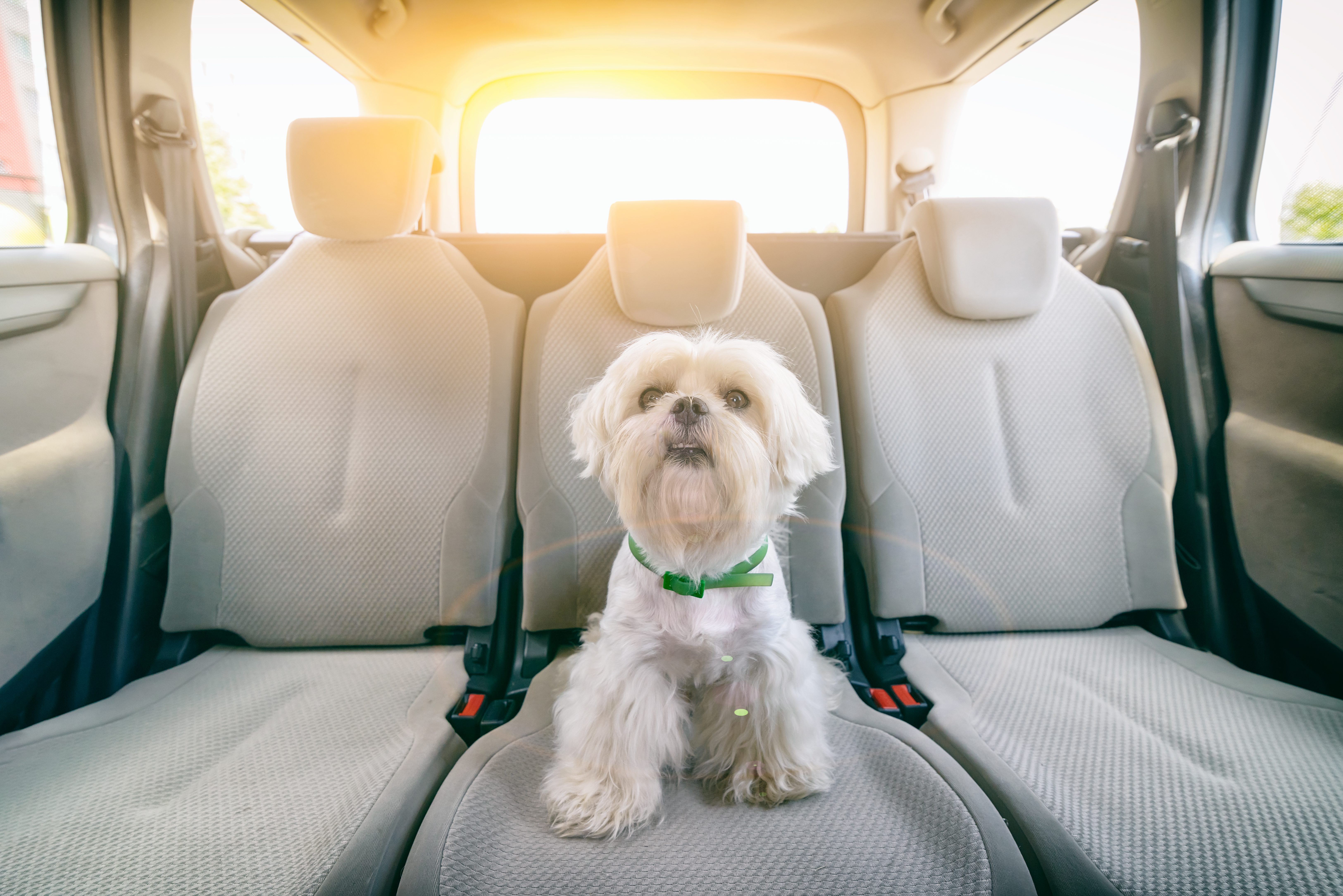
5 Steps to Easier Car Travel with Your Pet
For many pets, being placed in a travel carrier and taken on a drive to a place they don’t know is a terrifying experience. If they aren’t used to car travel, both dogs and cats can have negative responses, including distressed behaviors, increased vocalizations and even car sickness. Perhaps they associate car travel with the vet, or they are frightened by the noise and movements while you’re on the road.
Fortunately, this doesn’t have to be the case, whether your pet is young or old. You can train your pet to love the car as much as they love being home so it is much easier to take them on trips or quick errands.
If your pet is scared of car travel, follow these five steps to help them get acquainted and comfortable.
1. Consider the carrier or harness
When traveling by car, the safest place for your pet is in a travel carrier or, for some dogs, strapped into a car harness. These restraints ensure your cat or dog remains safe and secure for the entire trip, preventing them from roaming throughout the car and minimizing the risk of injury in the event of a crash.
Before you hit the road, you will want to choose a safe car restraint for your pet. This should be the first thing you familiarize your pet with, without even getting near the car.

If you’re using a carrier or crate, place it in a room your pet frequents and allow them to investigate it on their own. You may want to place a cozy blanket, a T-shirt with your scent or a few toys inside to encourage your pet to make their carrier a second home. If your pet isn’t so sure, try placing treats inside the carrier so the pet associates going inside it with a reward.
If you’re using a harness system for your dog, get your dog used to wearing the harness around the house. Sometimes, dogs are averse to harnesses if they have never worn them before. Take it slow and allow your pet to become comfortable in it.
2. Desensitize you pet to the car
Once your pet is comfortable in their carrier or harness, you’re ready for the next step: transitioning from inside the home to the car. Take your pet to the car in the carrier or harness and sit with them in the back seat while the car is off. Pet them, offer them treats and gently play with toys to get the pet comfortable in the new space. Repeat this step for a few minutes at a time, multiple days in a row.
Eventually, transition into keeping your pet in the backseat while you sit in the front. Continue to provide your pet with treats as long as they stay calm and talk to them so they feel comfortable. Try to only reinforce positive behaviors like quiet, relaxed sitting with rewards.
3. Get your pet used to the engine
After a few sessions with you in the front seat and your pet in the back, try repeating the process with the car running. For the first session, you might only want to run the engine for a few seconds before turning it off. During subsequent sessions, try leaving the car running for longer periods of time, providing rewards for good behavior.
If your cat or dog responds well to the training thus far, you can progress. If they start showing signs of distress or nervousness, you might want to slow down until they get more comfortable.
Nervous pets may also benefit from a little extra help calming down. Natural supplements may help promote more relaxed behavior in the car, and pheromone sprays might help your pet feel more at home in the back seat or its carrier.
4. Start with short drives

Once your pet is comfortable in the car while it is running, start taking short drives with your furry friend in the backseat. Gradually increase the length of these trips, working your way up from the length of your driveway to around the block to longer distances.
Again, if your pet starts to act anxiously, slow down and perhaps even go back a step to ensure they are comfortable. You don’t want your pet to be cowering in fear the entire duration of the trip!
5. Offer rewards at the destination
As you take longer drives, reward your pet at your destination. For dogs, this might be a fun game of fetch at a park, and for cats, it might be a new toy or treat inside the car.
Ultimately, you’ll want to help your pet associate driving with a fun experience or treat, rather than a negative experience.
Enjoy the ride!
Hopefully, after working through all these steps, your pet learns to love joining you in the car and going on road trips together. Remember to take the acclimation process slow and give your pup or kitty lots of encouragement along the way.
And, before you hit the road, ensure you have everything you need to keep your pet safe and happy!


